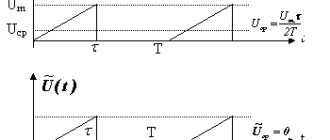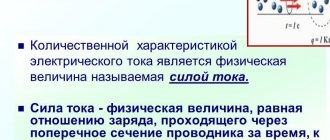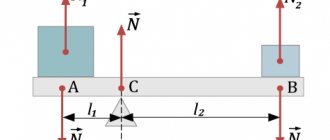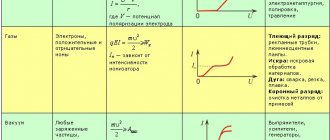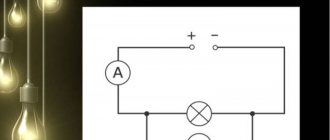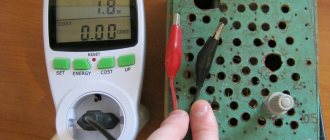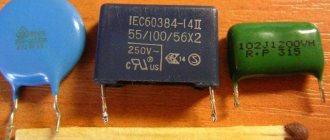How is MW read?
mW (mW) - milliwatt (that is, 1/1000 watt) - a unit of measurement of power in general and radio signal power in particular.
Interesting materials:
What to do if the iPhone screen turns yellow? What to do if the screen does not respond? What to do if the screen is upside down on your tablet? What to do if the screen is rippling? What to do if the screen gets bigger? What to do if the screen is narrowed? What to do if the movie does not open in full screen? What to do if the game does not play on full screen? What to do if the screen resolution has changed? What to do if the image on the screen is enlarged?
Units.
Conversion of units of measurement of thermal power.
Thermal power calculator. Conversion of thermal power units (W, kW, MW, cal/hour, kcal/hour, Mcal/hour, Gcal/hour, etc.)
Enter thermal power (QQ)
Result of converting thermal power units (QQ)
The results of the thermal power calculator when converted to other units of measurement of thermal power:
Examples of the results of the thermal power calculator:
/ 2710 Gcal/hour = 3151730 kW
//
630 kW = 0.000541699 Mcal/hour
//
0.5 W = 4.299E-7 Gcal/hour
//
2710 Gcal/hour = 2710000 Mcal/hour
//
27 Gcal/hour = 31401000 W
/ /
0.5 W = 0.429923 kcal/hour
/
Share a link to the calculation:
Units.
- W
is a SI unit of measurement.
Designation in Russia: W
;
international : W. This unit of measurement is widely used in engineering calculations, in modern reference literature, in designating the parameters of equipment, technical devices, in the development of design and working documentation; - kW
- Designation in Russia:
kW
;
international: kW . This unit of measurement is widely used in engineering calculations, in modern reference literature, in designating the parameters of equipment, technical devices, in the development of design and working documentation; - MW
- Designation in Russia:
MVT ; international: MW . This unit of measurement is widely used in engineering calculations, in modern reference literature, in designating the parameters of equipment, technical devices, in the development of design and working documentation; - calorie/hour
- non-system units of measurement.
Designation in Russia: cal/hour . - kcalorie/hour
- non-system units of measurement.
Designation in Russia: kcal/hour . This unit of measurement is widely found in reference literature; - Mcalorie/hour
- non-system units of measurement.
Designation in Russia: Mcal/hour. This unit of measurement is widely found in reference literature; - Gcalorie/hour
- non-system units of measurement.
Designation in Russia: Gcal/hour . This unit of measurement is widely found in reference literature.
Conversion of units of measurement of thermal power (in tabular form).
| Convertible units | Conversion of energy into thermal power: | ||||||
| W | kW | MW | cal/hour | kcal/hour | Mcal/hour | Gcal/hour | |
| W | 1 | 10-3 | 10-6 | 859,845227 | 0,859845 | 0,85984*10—3 | 0,85984*10—6 |
| to W | 103 | 1 | 10—3 | 0,859845227 | 0,85984*10—3 | 0,85984*10—6 | 0,85984*10—9 |
| M W | 106 | 103 | 1 | 0,85984*10—3 | 0,85984*10—6 | 0,85984*10—9 | 0,85984*10—12 |
| cal/hour | 0,001163 | 0,001163*10—3 | 0,00116*10-6 | 1 | 10-3 | 10-6 | 10-9 |
| kcal/hour | 1,163 | 0,001163 | 0,001163*10—3 | 103 | 1 | 10-3 | 10-6 |
| Mcal/hour | 1163 | 1,163 | 0,001163 | 106 | 103 | 1 | 10-3 |
| Gcal/hour | 1163000 | 1163 | 1,163 | 109 | 106 | 103 | 1 |
What is watt
The unit value of electrical energy for the work done over a period of time is called a watt.
Named after the mechanic and inventor James Watt. Denoted by W or W. He was the first to propose the use of horsepower as a universal unit of measurement of machine performance.
Can be represented by the formula:
W = joule/second, or 1 W = 1 J/sec.
To determine the power of electrical machines, the following formula is used:
P=U*I. Voltage times current.
Electricity is measured by "U" in volts and "I" in amperes by the resulting power in watts.
Quick conversion table for dBm to volts and watts into a 50 ohm load
It will be useful to many radio amateurs as a reference sheet, especially to those who are involved in designing, tuning and measuring the parameters of radio receiving equipment. Similar tables have already been published in various literature, but an attempt was made to generalize and place everything on one sheet. I and many of my friends printed this table on a printer and became convinced of its usefulness.
| dBm | V | W | dBm | V | W | dBm | V | W | dBm | V | W | S metr HF dBm m V VHF dBm nV |
| +60 | 224 | 1000 | 0 | 224 -3 | 1 -3 | -60 | 224 -6 | 1 -9 | -120 | 224 -9 | 1.0 -15 | 1 -121 0.19 -141 19.9 |
| +59 | 199 | 794 | -1 | 199 -3 | 794 -6 | -61 | 199 -6 | 794 -12 | -121 | 199 -9 | 794 -18 | 2 -115 0.4 -135 39.8 |
| +58 | 178 | 631 | -2 | 178 -3 | 631 -6 | -62 | 178 -6 | 631 -12 | -122 | 178 -9 | 631 -18 | 3 -109 0.79 -129 79.3 |
| +57 | 158 | 501 | -3 | 158 -3 | 501 -6 | -63 | 158 -6 | 501 -12 | -123 | 158 -9 | 501 -18 | 4 -103 1.58 -123 158 |
| +56 | 141 | 398 | -4 | 141 -3 | 398 -6 | -64 | 141 -6 | 398 -12 | -124 | 141 -9 | 398 -18 | 5 -97 3.16 -117 320 |
| +55 | 126 | 316 | -5 | 126 -3 | 316 -6 | -65 | 126 -6 | 316 -12 | -125 | 126 -9 | 316 -18 | 6 -91 6.3 -111 630 |
| +54 | 112 | 251 | -6 | 112 -3 | 251 -6 | -66 | 112 -6 | 251 -12 | -126 | 112 -9 | 251 -18 | 7 -85 12.6 -105 1260 |
| +53 | 99.9 | 200 | -7 | 99.9 -3 | 200 -6 | -67 | 99.9 -6 | 200 -12 | -127 | 99.9 -9 | 200 -18 | 8 -79 25.1 -99 2510 |
| +52 | 89.0 | 159 | -8 | 89.0 -3 | 159 -6 | -68 | 89.0 -6 | 159 -12 | -128 | 89.0 -9 | 159 -18 | 9 -73 50.0 -93 5000 |
| +51 | 79.3 | 126 | -9 | 79.3 -3 | 126 -6 | -69 | 79.3 -6 | 126 -12 | -129 | 79.3 -9 | 126 -18 | µV and nV at 50 Ohm |
| +50 | 70.7 | 100 | -10 | 70.7 -3 | 100 -6 | -70 | 70.7 -6 | 100 -12 | -130 | 70.7 -9 | 100 -18 | |
| +49 | 63.0 | 79.4 | -11 | 63.0 -3 | 79.4 -6 | -71 | 63.0 -6 | 79.4 -12 | -131 | 63.0 -9 | 79.4 -18 | |
| +48 | 56.2 | 63.1 | -12 | 56.2 -3 | 63.1 -6 | -72 | 56.2 -6 | 63.1 -12 | -132 | 56.2 -9 | 63.1 -18 | 50.0 -6 = 50.0 x 10 -6 |
| +47 | 50.0 | 50.1 | -13 | 50.0 -3 | 50.1 -6 | -73 | 50.0 -6 | 50.1 -12 | -133 | 50.0 -9 | ||
| +46 | 44.6 | 39.8 | -14 | 44.6 -3 | 39.8 -6 | -74 | 44.6 -6 | 39.8 -12 | -134 | 44.6 -9 | 39.8 -18 | |
| +45 | 39.8 | 31.6 | -15 | 39.8 -3 | 31.6 -6 | -75 | 39.8 -6 | 31.6 -12 | -135 | 39.8 -9 | 31.6 -18 | |
| +44 | 35.4 | 25.1 | -16 | 35.4 -3 | 25.1 -6 | -76 | 35.4 -6 | 25.1 -12 | -136 | 35.4 -9 | 25.1 -18 | -3 milli |
| +43 | 31.6 | 20.0 | -17 | 31.6 -3 | 20.0 -6 | -77 | 31.6 -6 | 20 -12 | -137 | 31.6 -9 | 20.0 -18 | -6 micro |
| +42 | 28.2 | 15.9 | -18 | 28.2 -3 | 15.9 -6 | -78 | 28.2 -6 | 15.9 -12 | -138 | 28.2 -9 | 15.9 -18 | -9 nano |
| +41 | 25.1 | 12.6 | -19 | 25.1 -3 | 12.6 -6 | -79 | 25.1 -6 | 12.6 -12 | -139 | 25.1 -9 | 12.6 -18 | -12 pico |
| +40 | 22.4 | 10.0 | -20 | 22.4 -3 | 10.0 -18 | |||||||
| -80 | 22.4 -6 | 10 -12 | -140 | 22.4 -9 | 10.0 -18 | -15 femto | ||||||
| +39 | 19.9 | 7.94 | -21 | 19.9 -3 | 7.94 -6 | -81 | 19.9 -6 | 7.94 -12 | -141 | 19.9 -9 | 7.94 -18 | -18 atto |
| +38 | 17.8 | 6.31 | -22 | 17.8 -3 | 6.31 -6 | -82 | 17.8 -6 | 6.31 -12 | -142 | 17.8 -9 | 6.31 -18 | |
| +37 | 15.8 | 5.01 | -23 | 15.8 -3 | 5.01 -6 | -83 | 15.8 -6 | 5.01 -12 | -143 | 15.8 -9 | 5.01 -18 | limit of sensitivity |
| +36 | 14.1 | 3.98 | -24 | 14.1 -3 | 3.98 -6 | -84 | 14.1 -6 | 3.98 -12 | -144 | 14.1 -9 | 3.98 -18 | 500 Hz band - 147dBm |
| +35 | 12.6 | 3.16 | -25 | 12.6 -3 | 3.16 -6 | -85 | 12.6 -6 | 3.16 -12 | -145 | 12.6 -9 | 3.16 -18 | band 2500Hz -140dBm |
| +34 | 11.2 | 2.51 | -26 | 11.2 -3 | 2.51 -6 | -86 | 11.2 -6 | 2.51 -12 | -146 | 11.2 -9 | 2.51 -18 | s/n=0 dB |
| +33 | 9.99 | 1.99 | -27 | 9.99 -3 | 1.99 -6 | -87 | 9.99 -6 | 1.99 -12 | -147 | 9.99 -9 | 1.99 -18 | |
| +32 | 8.90 | 1.58 | -28 | 8.9 -3 | 1.58 -6 | -88 | 8.9 -6 | 1.58 -12 | -148 | 8.9 -9 | 1.58 -18 | RX at 2500Hz s/n 10 dB |
| +31 | 7.93 | 1.26 | -29 | 7.93 -3 | 1.26 -6 | -89 | 7.93 -6 | 1.26 -12 | -149 | 7.93 -9 | 1.26 -18 | has 0.2 µV or -121 dBm |
| +30 | 7.07 | 1.0 | -30 | 7.07 -3 | 1.0 -6 | -90 | 7.07 -6 | 1.0 -12 | -150 | 7.07 -9 | 1.0 -18 | at s/n 0 dB -121-10 = -131 dBm |
| +29 | 6.30 | 0.79 | -31 | 6.3 -3 | 0.79 -6 | -91 | 6.3 -6 | 0.79 -12 | dBm | V | W | noise factor F = |
| +28 | 5.62 | 0.63 | -32 | 5.62 -3 | 0.63 -6 | -92 | 5.62 -6 | 0.63 -12 | -131- (-140) =9 dB | |||
| +27 | 5.01 | 0.5 | -33 | 5.01 -3 | 0.5 -6 | -93 | 5.01 -6 | 0.5 -12 | ||||
| +26 | 4.46 | 0.4 | -34 | 4.46 -3 | 0.4 -6 | -94 | 4.46 -6 | 0.4 -12 | we have F=3 dB | |||
| +25 | 3.98 | 0.32 | -35 | 3.98 -3 | 0.32 -6 | -95 | 3.98 -6 | 0.32 -12 | at 2500Hz s/n =0 dB | |||
| +24 | 3.54 | 0.25 | -36 | 3.54 -3 | 0.25 -6 | -96 | 3.54 -6 | 0.25 -12 | 3+(-140) = -137 dBm | |||
| +23 | 3.16 | 0.2 | -37 | 3.16 -3 | 0.2 -6 | -97 | 3.16 -6 | 0.2 -12 | at s/n = 10 dB | |||
| +22 | 2.82 | 0.16 | -38 | 2.82 -3 | 0.16 -6 | -98 | 2.82 -6 | 0.16 -12 | -137+10 = -127 dBm =99.9 nV | |||
| +21 | 2.51 | 0.13 | -39 | 2.51 -3 | 0.13 -6 | -99 | 2.51 -6 | 0.13 -12 | ||||
| +20 | 2.24 | 0.1 | -40 | 2.24 -3 | 0.1 -6 | -100 | 2.24 -6 | 0.1 -12 | IP3=0.5(P1- Pimp3) + P1 | |||
| +19 | 1.99 | 79.4 -3 | -41 | 1.99 -3 | 79.4 -9 | -101 | 1.99 -6 | 79.4 -15 | P1 - power of one tone dBm | |||
| +18 | 1.78 | 63.1 -3 | -42 | 1.78 -3 | 63.1 -9 | -102 | 1.78 -6 | 63.1 -15 | Pimp3 - product power | |||
| +17 | 1.58 | 50.1 -3 | -43 | 1.58 -3 | 50.1 -9 | -103 | 1.58 -6 | 50.1 -15 | dBm intermods | |||
| +16 | 1.41 | 39.9 -3 | -44 | 1.41 -3 | 39.9 -9 | -104 | 1.41 -6 | 39.9 -15 | ||||
| +15 | 1.26 | 31.6 -3 | -45 | 1.26 -3 | 31.6 -9 | -105 | 1.26 -6 | 31.6 -15 | DB3 = 2 (IP3 - Prf) / 3 | |||
| +14 | 1.12 | 25.1 -3 | -46 | 1.12 -3 | 25.1 -9 | -106 | 1.12 -6 | 25.1 -15 | Prf - feel at s/w = 0 dB in dBm | |||
| +13 | 0.99 | 20.0 -3 | -47 | 0.99 -3 | 20.0 -9 | -107 | 0.99 -6 | 20.0 -15 | ||||
| +12 | 0.89 | 15.9 -3 | -48 | 0.89 -3 | 15.9 -9 | -108 | 0.89 -6 | 15.9 -15 | take into account the +dBm or -dBM sign | |||
| +11 | 0.79 | 12.6 -3 | -49 | 0.79 -3 | 12.6 -9 | -109 | 0.79 -6 | 12.6 -15 | ||||
| +10 | 0.71 | 10.0 -3 | -50 | 0.71 -3 | 10.0 -9 | -110 | 0.71 -6 | 10.0 -15 | ||||
| +9 | 0.63 | 7.94 -3 | -51 | 0.63 -3 | 7.94 -9 | -111 | 0.63 -6 | 7.94 -15 | VWR=50 ohm | |||
| +8 | 0.56 | 6.31 -3 | -52 | 0.56 -3 | 6.31 -9 | -112 | 0.56 -6 | 6.31 -15 | ||||
| +7 | 0.5 | 5.01 -3 | -53 | 0.5 -3 | 5.01 -9 | -113 | 0.5 -6 | 5.01 -15 | ||||
| +6 | 0.45 | 3.98 -3 | -54 | 0.45 -3 | 3.98 -9 | -114 | 0.45 -6 | 3.98 -15 | ||||
| +5 | 0.4 | 3.16 -3 | -55 | 0.4 -3 | 3.16 -9 | -115 | 0.4 -6 | 3.16 -15 | ||||
| +4 | 0.35 | 2.51 -3 | -56 | 0.35 -3 | 2.51 -9 | -116 | 0.35 -6 | 2.51 -15 | ||||
| +3 | 0.32 | 2.0 -3 | -57 | 0.32 -3 | 2.0 -9 | -117 | 0.32 -6 | 2.0 -15 | ||||
| +2 | 0.28 | 1.59 -3 | -58 | 0.28 -3 | 1.59 -9 | -118 | 0.28 -6 | 1.59 -15 | ||||
| +1 | 0.25 | 1.26 -3 | -59 | 0.25 -3 | 1.26 -9 | -119 | 0.25 -6 | 1.26 -15 | 73 de RZ3QS | |||
| 0 | 0.22 | 1.0 -3 | -60 | 0.22 -3 | 1.0 -9 | -120 | 0.22 -6 | 1.0 -15 | ||||
| dBm | V | W | dBm | V | W | dBm | V | W |
How to convert kVA power to kW?
To quickly convert kVA to kW, you need to subtract 20% from kVA and you get kW with a small error that can be neglected. Or use the formula to convert kVA to kW:
P=S * Сos f
Where P is active power (kW), S is apparent power (kVA), Cos f is power factor.
For example, to convert a power of 400 kVA into kW, you need 400 kVA * 0.8 = 320 kW or 400 kVA-20% = 320 kW.
How many kilowatts are in one megawatt?
Megawatt power P (MW) is equal to kilowatt power P (KW) divided by 1000: P (MW) = P (KW) / 1000.
How many KW in 1 MW
For example, to convert 10 KW to megawatts, you need P (MW) = 10 kW / 1000 = 0.01 MW.
To convert kilowatts KW to megawatts MW, simple ratios are used:
- 1 MW = 1000 KW;
- 1 KW = 0.001 MW.
A simple table to find out how many kilowatts are in a megawatt or to convert KW/MW:
- 0 KW - 0 MW;
- 1 KW - 0.001 MW;
- 10 KW - 0.01 MW;
- 100 KW - 0.1 MW;
- 1000 KW - 1 MW;
- 10,000 KW - 10 MW;
- 100,000 KW - 100 MW;
- 1,000,000 KW - 1000 MW.
What are kilowatts and megawatts
Kilowatts (kW) and megawatts (MW) are derived from the unit of power and energy, the watt (W). Power is defined as a unit of energy per unit of time. The SI system defined its unit as the watt (W), calculated as 1 J of energy in 1 second. time. Thus, a conventional 40 W light bulb consumes 40 J of electricity every second to burn.
For your information! The first mention of a megawatt was found in an article in Science magazine in November 1947, talking about a 1 MW wind turbine.
Internal combustion engines and power plant generators have two different powers, defined by one dimensional unit - W. The energy entering the car engine after fuel combustion is thermal, and the energy produced by this engine is mechanical. For generators in a nuclear power plant or any other generating power plant, the power is considered electrical and it is measured in MW.
Energy is the ability of a system to do work. Power actually determines the rate at which energy is generated or consumed and is defined as the rate at which work is done on an object. Like all speed indicators, it depends on time.
Force is related to how quickly work is done. Two identical jobs can be executed at different speeds - one slowly or one quickly. The work is the same in each case, but the power makes a difference between them.
You might be interested in Measuring power consumption
The equation shows the importance of time: Power = Work / Time (P = W / T).
DC power
Note! The standard metric unit of work is the joule and the standard metric unit of time is the second, so the standard metric unit of power is the joule/second, defined as a watt, abbreviated W.
Particular care should be taken not to confuse the unit of watt, abbreviated W, with quantity of work, also abbreviated W. It was introduced into the International System (SI) in honor of the Scottish engineer D. Watt (1736-1819). Watt's law defines the relationship between voltage, current and power. By applying Watt's rule, it is possible to formulate it in Watt form using current and voltage.
Power (W) = Current (A) X Potential difference (V).
Combining the above with Ohm's law, it is possible to obtain electrical power (W) using resistance.
Thermal power calculator.
INITIAL DATA Enter the amount of heat (Qt)
Convert heat units online
Enter heat transfer time (t1)
Convert time units online
Download the full calculation:
In developing!
Share a link to the full calculation:
CALCULATION Result of calculation of process thermal power (QN)
Formula for calculating the thermal power of the process:
Download the result of calculating the thermal power of the process:
Share a link to the calculation of thermal power:
What is measured in these units
Megawatts are used to refer to large receivers or generators of electrical energy. The average coal power plant produces in the region of 600 MW.
Installed electrical capacity of the largest state district power plants in Russia in MW:
- Kostroma State District Power Plant, 3600;
- Ryazanskaya GRES, 3130;
- Konakovskaya GRES, 2520.
Megawatts are used not only to indicate the productivity of large energy facilities. A similar dimension is also common in the housing and communal services system and large industrial facilities. Thus, a high-rise multi-apartment residential complex is capable of consuming several MW of electricity to ensure the operation of lighting and air conditioning systems.
You might be interested in what 1 ampere is equal to in kilowatts
An electric locomotive has the ability to consume up to 12 MW of electrical energy, and a single nuclear power plant can produce up to 1,200 MW or more. The largest nuclear power plant in Russia is Kursk NPP-2 - 1255 MW of one unit. Today in Russia, ten operating nuclear power plants use 35 power units with a capacity of more than 29,000.0 MW.
Total installed capacity of UES of Russia facilities
For your information! Due to concerns about the storage of nuclear waste and harmful emissions from coal-fired power plants, the global energy sector is currently expanding capacity to generate electricity from non-traditional sources using solar and wind. The unit capacity of such installations is more than 21,000 MW of solar energy.
A kilowatt is equal to 1000 watts. This dimension is used mainly to express the power consumption of electric motors, electric boilers, heaters and radio transmitters, household electrical appliances and water heaters.



